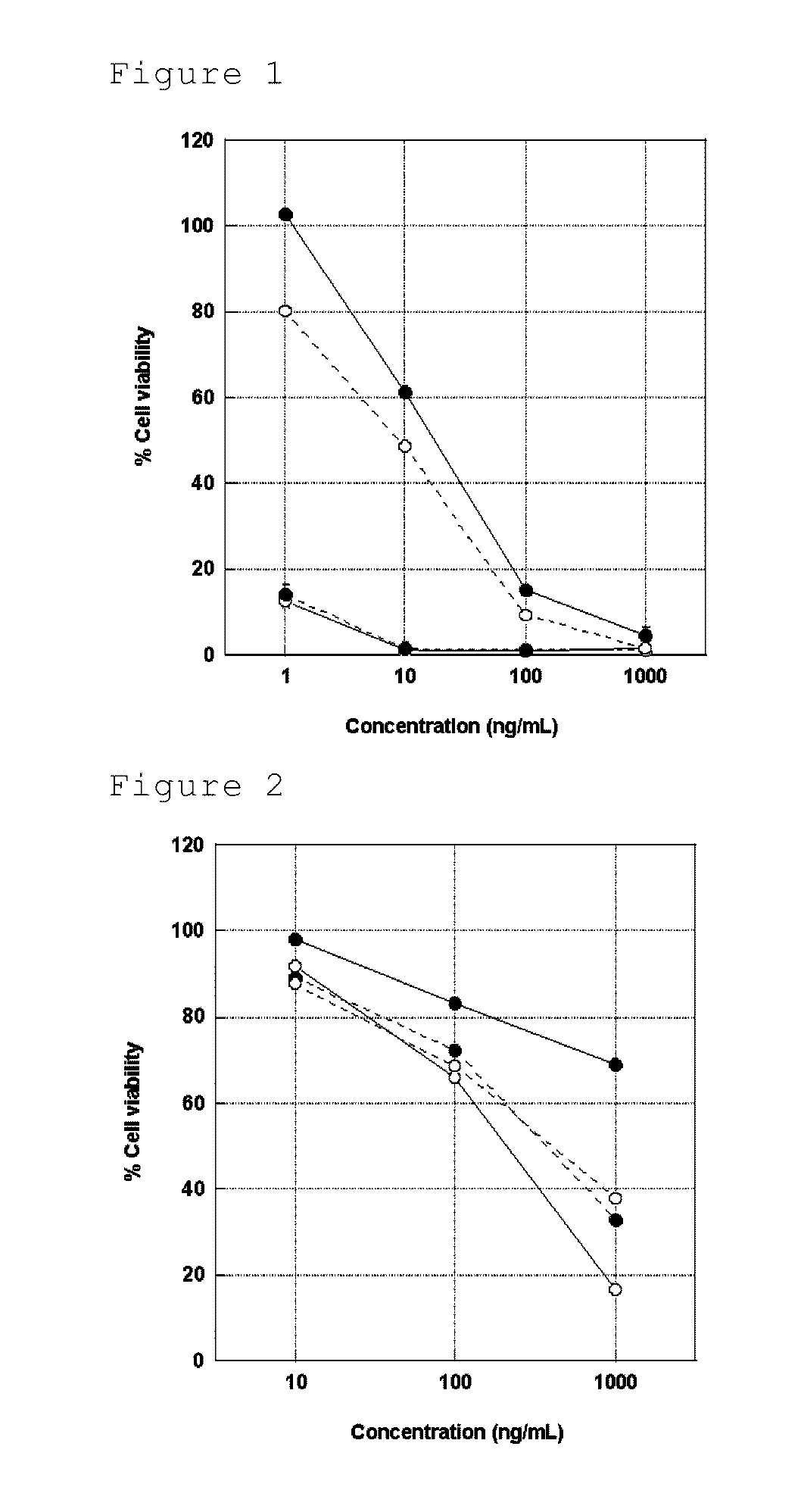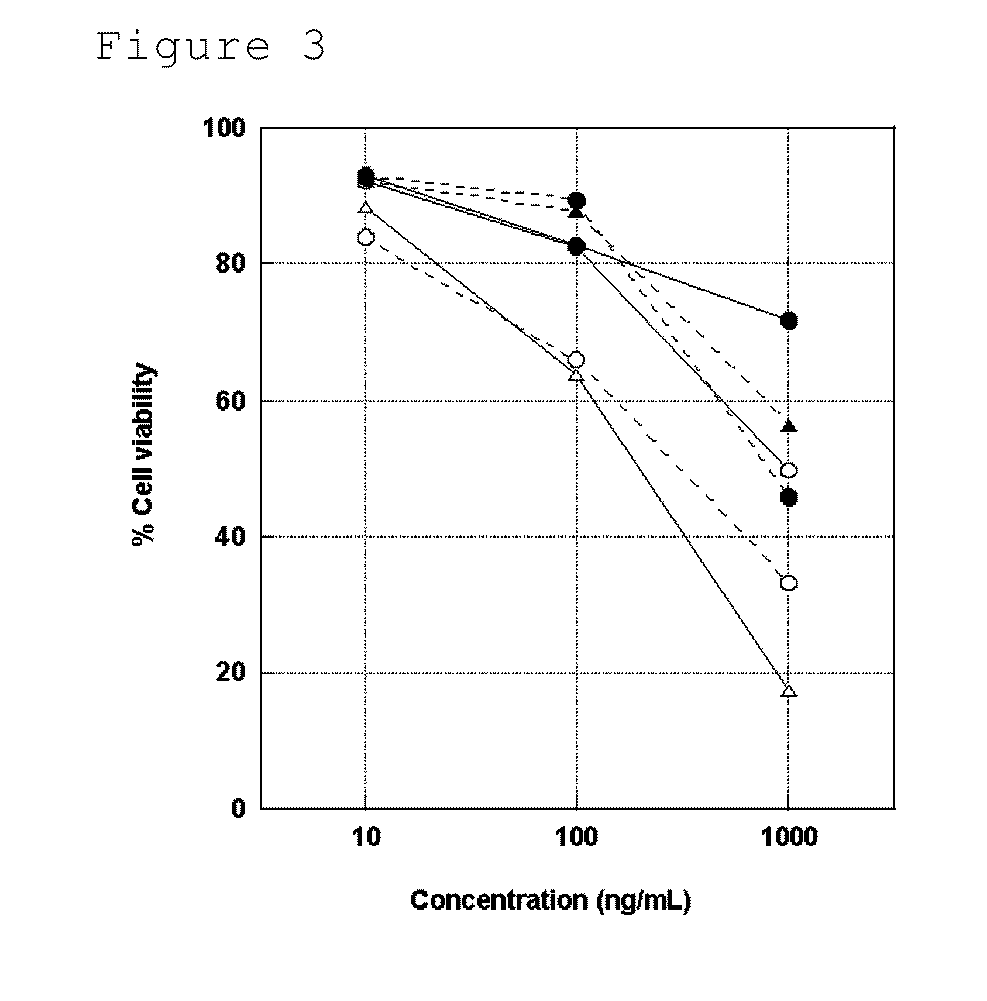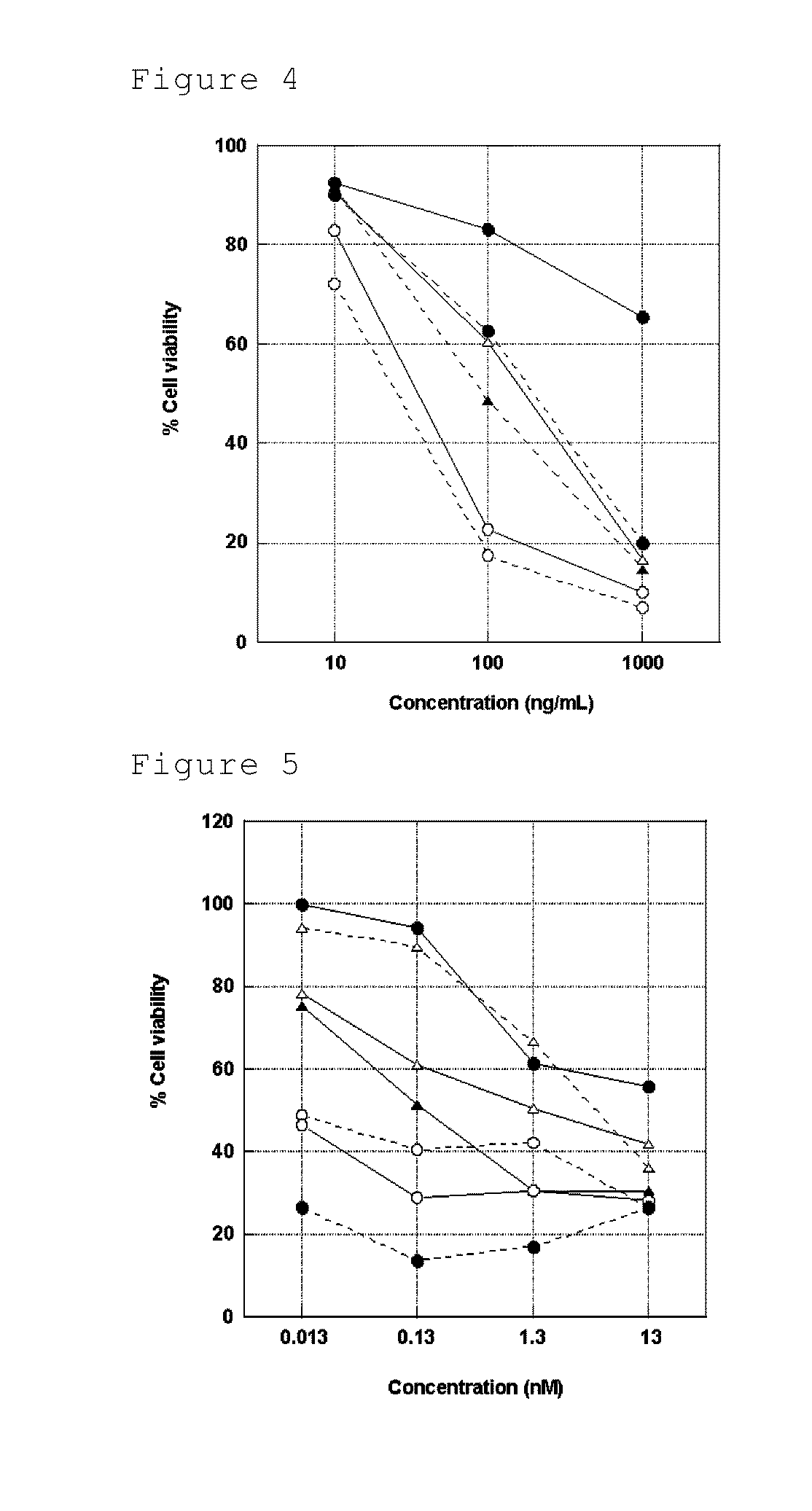Antibodies modified with hydrophobic molecule
a technology of antibodies and molecules, applied in the field of immunooliposomes, can solve the problems of limited amount of drug that can actually reach the target site and exert its activity, large amount of drug lost in a solution, and liposomes have not been put to practical use so far
- Summary
- Abstract
- Description
- Claims
- Application Information
AI Technical Summary
Benefits of technology
Problems solved by technology
Method used
Image
Examples
reference example 1
Preparation of hTRA-8 F(ab′)2
[0359]The concentration of an anti-human DR5 antibody hTRA-8 was adjusted to 10 mg / ml with an acetate buffer (20 mM sodium acetate, pH 4.5). In this context, the hTRA-8 is an antibody obtained by humanizing a mouse anti-human DR5 antibody TRA-8 (Nature Med. 2001, 7 (8), 954-60) and has the amino acid sequence of SEQ ID NO: 1 described in the sequence listing as the heavy chain amino acid sequence and the amino acid sequence of SEQ ID NO: 2 described in the sequence listing as the light chain amino acid sequence. An amino acid sequence consisting of amino acid residues 1 to 118 of the amino acid sequence of SEQ ID NO: 1 described in the sequence listing corresponds to the heavy chain variable region sequence of hTRA-8, and an amino acid sequence consisting of amino acid residues 1 to 107 of the amino acid sequence of SEQ ID NO: 2 described in the sequence listing corresponds to the light chain variable region of hTRA-8. To 1 ml of the present antibody so...
reference example 2
Preparation of hHFE7A F(ab′)2
[0360]The concentration of an anti-human Fas antibody hHFE7A was adjusted to 10 mg / ml with an acetate buffer (20 mM sodium acetate, pH 4.5). In this context, the hHFE7A is an antibody obtained by humanizing a mouse anti-human Fas antibody HFE7A (Int. Immunol. 2000, 12 (4), 555-62) and has the amino acid sequence of SEQ ID NO: 3 described in the sequence listing as the heavy chain amino acid sequence and the amino acid sequence of SEQ ID NO: 4 described in the sequence listing as the light chain amino acid sequence. An amino acid sequence consisting of amino acid residues 1 to 139 of the amino acid sequence of SEQ ID NO: 3 described in the sequence listing corresponds to the heavy chain variable region sequence of hHFE7A, and an amino acid sequence consisting of amino acid residues 1 to 131 of the amino acid sequence of SEQ ID NO: 4 described in the sequence listing corresponds to the light chain variable region of hHFE7A. To 1 ml of the present antibody...
example 1
(1) Preparation of hTRA-8 Fab′
[0361]The F(ab′)2 solution (antibody concentration: 2.5 mg / ml, HEPES buffer) prepared in Reference Example 1 was incubated at room temperature for 90 minutes in the presence of 10 mM L-cysteine (Wako Pure Chemical Industries, Ltd.) for reduction to Fab′. The L-cysteine was removed by gel filtration purification (column: GE HEALTHCARE INC., PD-10 Desalting column; HEPES buffer) to obtain a hTRA-8 Fab′ fragment.
(2) Preparation of Liposome
[0362]22 mg, 7.73 mg, and 1.26 mg (molar ratio 100:66:1) of L-α-dipalmitoylphosphatidylcholine (hereinafter, referred to as DPPC; NOF CORPORATION, COATSOME MC-6060), cholesterol (Sigma-Aldrich, Inc.), and poly(ethylene glycol)succinyl distearoylphosphatidylethanolamine (hereinafter, referred to as DSPE-PEG3400-Mal; NOF CORPORATION, SUNBRIGHT DSPE-034MA) having a maleimide group at the end of polyethylene glycol of approximately 3400 in molecular weight were weighed, respectively, in an eggplant-shaped flask, to which 3 ml...
PUM
| Property | Measurement | Unit |
|---|---|---|
| time | aaaaa | aaaaa |
| time | aaaaa | aaaaa |
| size | aaaaa | aaaaa |
Abstract
Description
Claims
Application Information
 Login to View More
Login to View More - R&D
- Intellectual Property
- Life Sciences
- Materials
- Tech Scout
- Unparalleled Data Quality
- Higher Quality Content
- 60% Fewer Hallucinations
Browse by: Latest US Patents, China's latest patents, Technical Efficacy Thesaurus, Application Domain, Technology Topic, Popular Technical Reports.
© 2025 PatSnap. All rights reserved.Legal|Privacy policy|Modern Slavery Act Transparency Statement|Sitemap|About US| Contact US: help@patsnap.com



